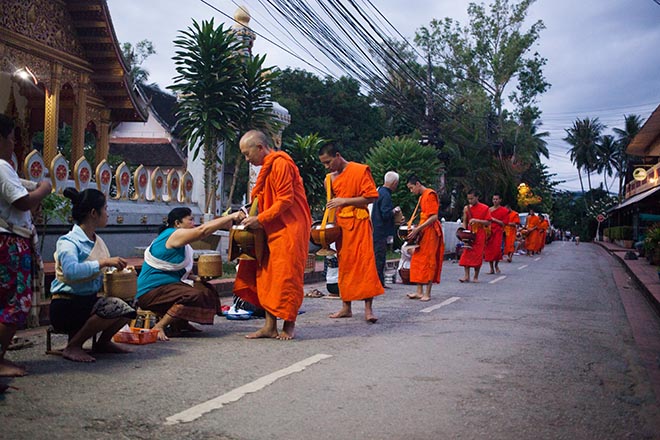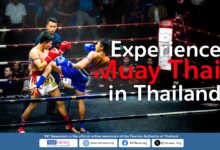The Tourism Authority of Thailand (TAT) showcases a model multi-destination ASEAN connectivity itinerary that combines the cultural and historical heritages of Lao PDR., Myanmar and Thailand
A new alliance to promote travel and tour packages among key destination partners — Lao PDR., Myanmar and Thailand — could help accelerate the region’s tourism growth as part of greater ASEAN connectivity promoted by the Tourism Authority of Thailand (TAT).
A five-day excursion for Bangkok-based international media was fully hosted by TAT and achieved its objective to highlight Thailand’s potential as the region’s primary aviation hub and tourism engine. Low-cost carriers continue to add new flights around the region helping to make the action-packed itinerary possible. It clearly showed how air connectivity between secondary tourist destinations helps maximise the immense tourism potential of the region.
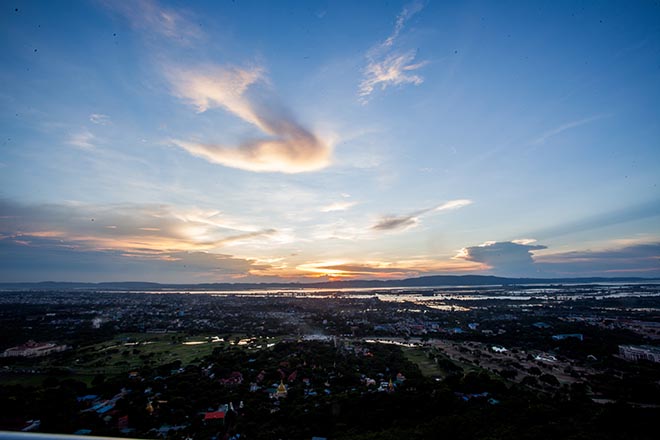
DAY ONE: Bangkok-Mandalay
The first day started with a direct Thai AirAsia flight from Bangkok to Mandalay, the former capital of Myanmar. After arrival, the group took a private boat trip up the Irrawaddy River to Mingun, taking in the picturesque scenery along the river. Here, the group visited Mingun Paya, an incomplete monument stupa that was intended to become the world’s largest pagoda, the white Myatheintan Pagoda, and the Mingun Bell, the world’s biggest functioning bronze bell. After a return boat trip to the town, a climb up Mandalay Hill provided stunning panoramic views of Mandalay.
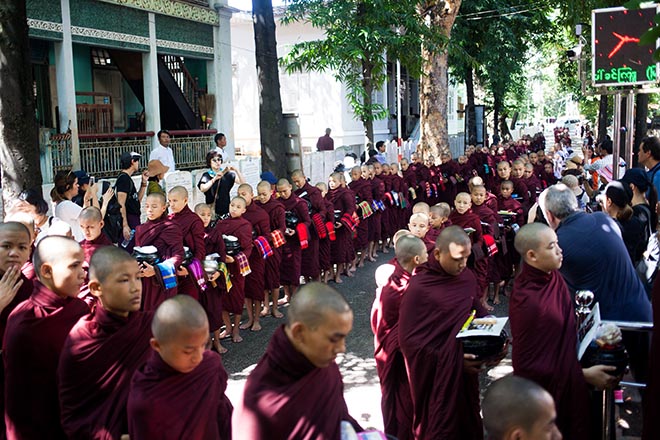
DAY TWO: Mandalay-Chiang Mai
The second day kicked off at 3.30 a.m. to observe the early morning ritual of washing the face of the Mahamuni Buddha image at Mahayatmuni Monastery. The temple was packed with devout Buddhists coming to witness the sacred ritual, initiated since 1988, which commences every day at 4.00 a.m. and lasts over an hour. The group then travelled to Mahagandayon, a famous Buddhist monastery in Amarapura, south of Mandalay, to observe nearly 2,000 monks lining-up for a lunch almsgiving ritual, and continue onto the nearby 235-year-old U Bein Wooden Bridge. Following this, the group stopped at Kuthodaw Pagoda that contains the world’s largest book, the Shwenandaw Monastery and the Golden Palace Monastery in which the latter contains remnants of what was the former royal apartment of Mandalay Palace.
From palaces and temples of Mandalay, the ASEAN connectivity itinerary in Myanmar concluded with a direct flight to Chiang Mai on Bangkok Airways.
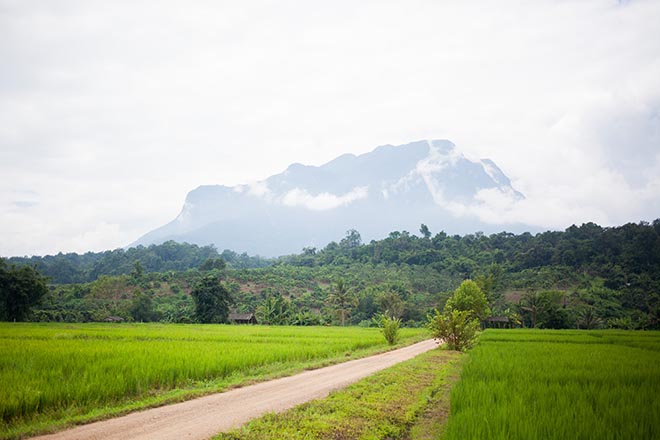
DAY THREE: Chiang Mai
The Hua Tung Forest community outside Chiang Mai proved a highlight. The homestay village is a sustainable ecotourism model on environmental conservation and protection. Activities included bamboo basket weaving, visiting an organic farm and the community forest, and enjoying culinary delights native to Thailand’s Northern Region. Next was a cooking class at the Meena Rice Learning Centre from the owner and head chef about Khao Yum or five-grained rice salad. An evening visit to the MAIIAM Contemporary Art Museum was another highlight as the co-founder, Mr. Jean Michel Beurdeley, personally gave a tour of the art gallery. The Museum was built in memory of Chao Chom Iam – a royal consort to King Rama V the Great – the great-great aunt of Eric Bunnag Booth, another co-founder. It is is located in San Kamphaeng, a village in Chiang Mai best known for its Lanna-style silk and cotton products.
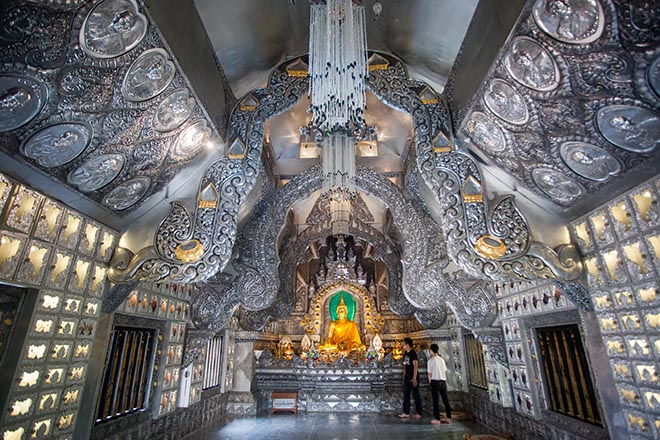
DAY FOUR: Chiang Mai-Luang Prabang
A visit to Wat Sri Supan started the day with lovely welcome dances by local school children followed by a sacred ritual of extending life performed by the abbot, Phrakru Phitak Suttikun. The temple’s main chapel has silver decorations, reflecting its location amid Chiang Mai’s famous silversmith community on Wua Lai Road. Hence, it is also known as the world’s first silver temple.
After discovering many unique Thai local experiences in Chiang Mai, the ASEAN connectivity itinerary in Thailand concluded with a one-hour flight to Luang Prabang on Lao Airlines.
After landing, a climb up Mount Phousi provided a breath-taking sunset and view of Luang Prabang and the surrounding rivers, including the mighty Khong River. The first evening ended with a walkabout at Luang Prabang’s famed night market along Sisavangvong Road.
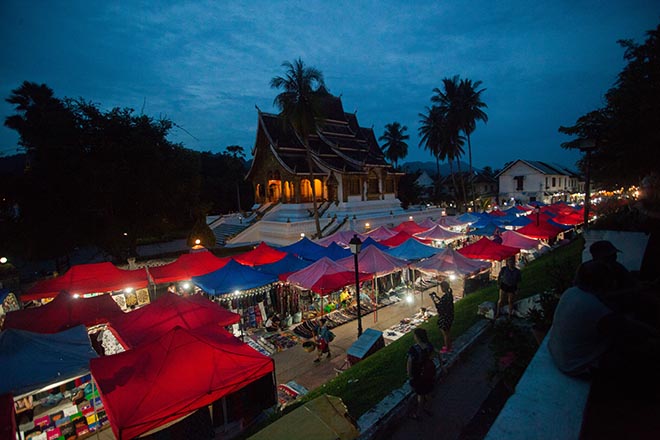
DAY FIVE: Luang Prabang-Bangkok
The final day of the ASEAN connectivity itinerary began with early morning almsgiving to Buddhist monks followed by a visit to the morning market in Luang Prabang. The group then went on a Khong River cruise to the famous Pak Ou Cave (Ting Cave). The Cave houses thousands of Buddha images of various sizes, many of which were placed by devout Buddhists from near and far for good luck. Stops at Wat Xien Thong, one of Lao PDR’s most beautiful and richly decorated temples, and the Royal Palace Museum, originally the residence of the last king, provided insights into the history and culture of the only landlocked country in the whole of Southeast Asia. The trip concluded with a direct flight to Bangkok on Thai AirAsia.
After heading back from the five-day visit to Myanmar, Thailand and Lao PDR., the group believes this trip can inspire others to create enjoyable new travel itineraries between the three countries and beyond.
